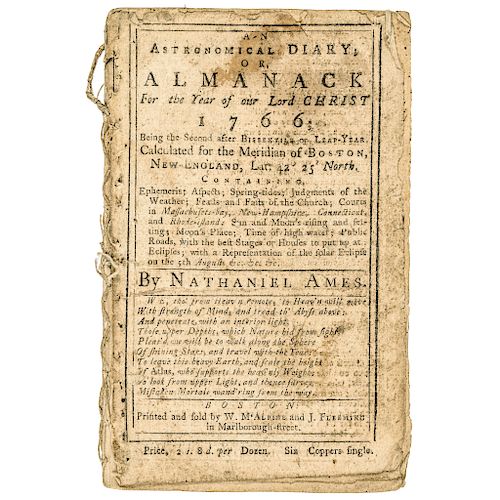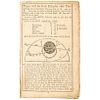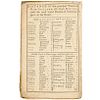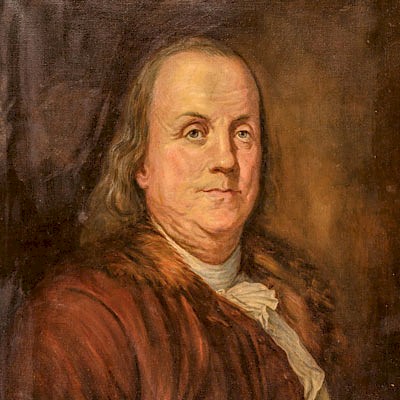1766-Dated Paul Revere, Jr. Eclipse Woodcut in Nathaniel Ames Boston Almanack
Lot 102
Estimate:
$2,000 - $2,400
Absentee vs Live bid
Two ways to bid:
- Leave a max absentee bid and the platform will bid on your behalf up to your maximum bid during the live auction.
- Bid live during the auction and your bids will be submitted real-time to the auctioneer.
Bid Increments
| Price | Bid Increment |
|---|---|
| $0 | $10 |
| $200 | $20 |
| $300 | $25 |
| $500 | $50 |
| $1,000 | $100 |
| $2,000 | $200 |
| $3,000 | $250 |
| $5,000 | $500 |
| $10,000 | $1,000 |
| $20,000 | $2,000 |
| $30,000 | $2,500 |
| $50,000 | $5,000 |
| $100,000 | $10,000 |
| $200,000 | $20,000 |
| $300,000 | $25,000 |
| $500,000 | $50,000 |
About Auction
By Early American History Auctions
Aug 24, 2019
Set Reminder
2019-08-24 12:00:00
2019-08-24 12:00:00
America/New_York
Bidsquare
Bidsquare : Autographs, Colonial Currency, Political Americana, Historic Guns
https://www.bidsquare.com/auctions/early-american-history-auctions/autographs-colonial-currency-political-americana-historic-guns-4347
Historic Autographs • Colonial Currency • American Civil War Colonial Era • Revolutionary War • Political Americana • Black History Early American History Auctions auctions@earlyamerican.com
Historic Autographs • Colonial Currency • American Civil War Colonial Era • Revolutionary War • Political Americana • Black History Early American History Auctions auctions@earlyamerican.com
- Lot Description
Colonial America
Paul Revere's Woodcut "Representation of the ... Eclipse"
1766-Dated, "An Astronomical Diary; Or, Almanack For the Year of Our Lord CHRIST 1766," By Nathaniel Ames, Printed and Sold by W. M'Alpine and J. Fleeming, Boston, Fine.
This is an original Boston printed Almanack by the historic printer Nathaniel Ames. It is complete, measuring 6.5" x 4", with all 20 pages, including an excellent example of Paul Revere's woodcut engraved Print of an Eclipse, located on page 13. It reads, in part: "There will be four Eclipses this year. The first of the SUN, February 9th, at 7h. 13m, 23s, Morning, invisible in North America...". This Paul Revere Engraved woodcut nicely diagrams the exact position of the Sun, Moon, and the Earth at the middle of the Eclipse event. Colonial Almanacs frequently contained illustrations of either "Man of Signs," the Farmer's Labors in each month, or other Astronomical woodcuts, such as Eclipses and Celestial movements. This example is quite good in its diagramming, thus helping through use of a visual aid to make the text more understandable to its readers. This is an important example of how woodcut images helped define Colonial and post-colonial life in the American colonies. The front cover has separated from the stitching along the spine and has some light foxing from use. Internally the pages are quite clean and pleasing. The historic Paul Revere Engraved "Representation of the ... Eclipse" woodcut, is sharply printed, crisp and clean with choice eye appeal. Whole and complete, this historic important British Stamp Act period Colonial American Boston Almanac contains an authentic Engraving by Paul Revere. See: Clarence Brigham, "Paul Revere's Engravings" p. 198; F Drake 3149; Evans 9897. R. 1849.
Nathaniel Ames, (1741-1822), was an Almanac writer, physician, and political activist, was born in Dedham, Massachusetts, the son of Nathaniel Ames and Deborah Fisher Ames. The senior Nathaniel strongly influenced his son with his deep interest in the "new science" of Isaac Newton and his activities as a physician, tavern proprietor, and compiler of a notable almanac. At sixteen Nathaniel, Jr., entered Harvard College and in January 1758 began to keep a diary.
- Shipping Info
-
Early American provides in-house worldwide shipping. Please contact us directly if you have questions about your specific shipping requirements.
-
- Buyer's Premium



 EUR
EUR CAD
CAD AUD
AUD GBP
GBP MXN
MXN HKD
HKD CNY
CNY MYR
MYR SEK
SEK SGD
SGD CHF
CHF THB
THB













